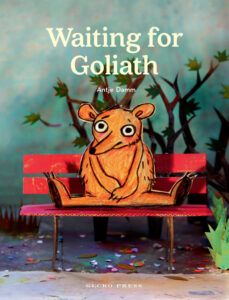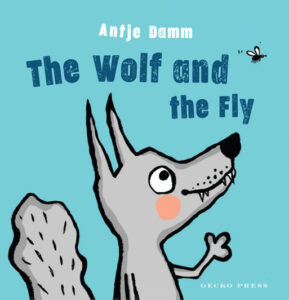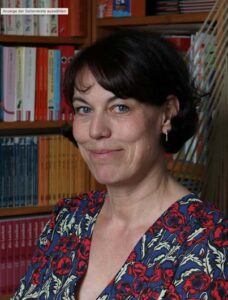 Antje Damm was born in Wiesbaden, Germany. She worked as an architect before she came to children’s books. She lives with her family and an ancient turtle in a half-timbered house near Gießen, and loves collecting mushrooms in the forest, carving, and building small dioramas in matchboxes. The unique illustrations in many of Antje Damm’s picture books are created by photographing carefully constructed 3D models and illustrated cut-out characters.
Antje Damm was born in Wiesbaden, Germany. She worked as an architect before she came to children’s books. She lives with her family and an ancient turtle in a half-timbered house near Gießen, and loves collecting mushrooms in the forest, carving, and building small dioramas in matchboxes. The unique illustrations in many of Antje Damm’s picture books are created by photographing carefully constructed 3D models and illustrated cut-out characters.
Her books with Gecko Press are The Visitor, Waiting for Goliath and The Wolf and the Fly. The Visitor was selected as a New York Times / New York Public Library best picture book.
What inspired you to make The Visitor?
The Visitor came about after an experience with my two younger daughters. We were in a bakery, there was a long queue and the people were pretty annoyed. When my children came in and wondered out loud which piece of cake would suit which family member, the mood changed and the people suddenly laughed. I thought it was nice: that children can positively change the mood just by being there.
I also thought of an empty stage that suddenly changes and comes to life when someone is there. So I built this grey, gloomy and dark room out of cardboard and let Elise move in: an old, frightened woman whose life changes after a child visits, becoming colourful and bright and richer.
Even as an architect, I always enjoyed building models because it is a playful work. I found it more difficult to photograph the individual scenes because I had never done such photography before.
Can you describe your illustration process?
For The Visitor, I made a box with figures inside and photographed each scene. Colour comes gradually into the story, so I painted the figures and the room for each scene then photographed it before painting it again. The lighting effects come through a hole at the top of the box. This was a risky way to make the book, because each time I changed the scene, the earlier version was lost. If the photographs hadn’t worked out, the whole book would have been ruined!
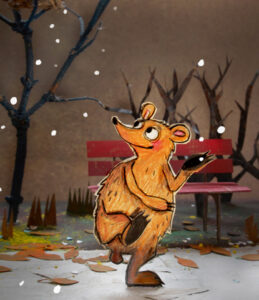
For Waiting for Goliath, I worked with only one model and changed it for every picture, such as sticking on/adding leaves, letting flour rain down, and I also tried to work a lot with the light. I made many copies of each character in both books to use in different scenes.
How do you come up with new story ideas?
All my books are very different. I don’t have a specific style, and I always try to discover new ways to make children’s books. But one issue is very important for me, and that’s philosophizing with children. I think we can (and ought to) confront them with the big questions of the world: our relationships, death, happiness, and life. I also made various books with questions to talk about different philosophic “themes” with children, like “time”, “nothing” or “lies and truth.”
What role do you think picture books can play for children?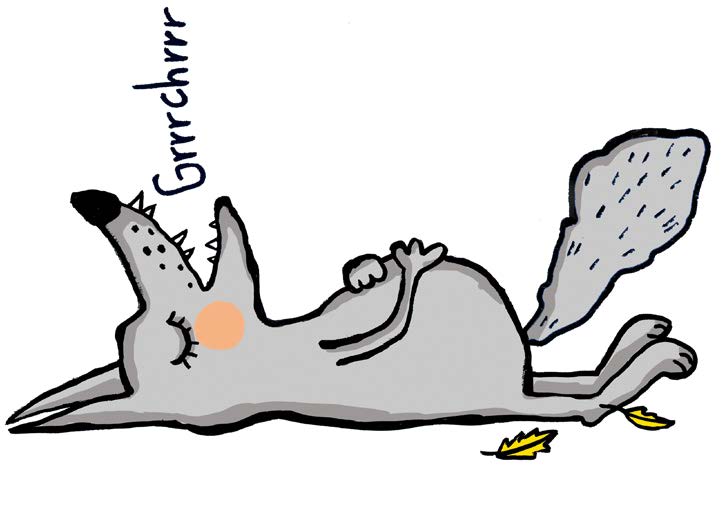
Picture books are food for the mind. Every child should have the opportunity to immerse themselves in stories and learn to read pictures. I think it’s important that children are offered a variety of books. This way they develop preferences, can choose and train their viewing habits. Picture books offer an introduction to visual storytelling. The best books for this are those whose pictures not only represent what is told in the text, but also have a tension with the written story. In a good book, this can work in very different ways. Picture and text can contradict, complement, enrich or even disturb in their relationship to each other. Both can tell their own stories. This discovery is fun for children, and that’s what it should be about: the joy of entering other worlds.
How does your background as an architect influence your children’s books?
I think creating a vision for a house is similar to creating a book. You must develop a concept, and you have to decide for whom and why you want to make something. I already liked drawing, and studying architecture was exploring shapes artistically. When I had my daughters (I have four), I decided to work less, and I started to make little picture books for them. Coincidentally, a woman I knew who worked for a well-known German publisher saw my works and encouraged me to send them to publishers I liked. This was 25 years ago and the beginning of my new career. I loved working as an architect, but it is very hard with little children, and making children’s books is more flexible. And I love this work. In my opinion sometimes you must make a detour to achieve your aim…
What do you think is the value of travelling as part of a festival like Picture Me?
I am a curious person. Readings and workshops with children are a central and very important part of my work. I learn a lot and am amazed by the children’s thoughts and perspectives. It is exciting to observe how children all over the world think and how they are influenced by the conditions in which they grow up. For example, on a trip to China I made very interesting observations and discovered that picture books there are often evaluated according to educational objectives and no particular value is placed on fun. I wonder how this influences children.
Meeting other children’s book creators is a chance for me to exchange ideas and learn from them. What is their working situation like, how is their work recognized, are there differences to literature for adults and what is their collaboration with publishers like? I am really looking forward to finding out more about this!
What are you most looking forward to on this trip to New Zealand?
I am so happy about this great invitation because I will meet lots of people and get to know this wonderful country. And it is always a challenge and a joy for me to be able to show my work. Hopefully I will live up to expectations and bring something back with me. I am sure I will take a lot with me from this trip. I will enjoy every moment!
Oh, and because I love nature so much, it would be great to see a little kiwi or a great whale…

